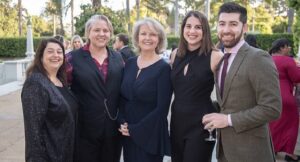
“Borderlands,” a new permanent collections installation that explores a more expansive view of American art history, has opened at The Huntington Library, Art Museum and Botanical Gardens in San Marino.
In “Borderlands,” a portion of The Huntington’s American art collection is contextualized with contributions from contemporary artists.
Partnering with Enrique Martínez Celaya, a 2020-2022 Huntington Fellow in the Visual Arts, and Sandy Rodriguez, a 2020-2021 Caltech-Huntington Art + Research Fellow, The Huntington secured strategic loans to help re-imagine the historical collections by artists between the 19th and early 20th century such as Mary Cassatt, Frederic Edwin Church, Thomas Eakins, and Winslow Homer.
The new installation opened on Saturday, November 20 and is spread over 5,000 square feet of gallery space, and highlights more than 70 works, including paintings, sculptures, decorative art objects, and video installations. Unlike previous installations, “Borderlands” is organized thematically. It also features an education room, where visitors can learn about locally sourced botanical- and mineral-based pigments.
A thematic anchor in the exhibition is an eight-foot-by-eight-foot watercolor painted by Rodriguez, called “YOU ARE HERE/Tovaangar/El Pueblo de Nuestra Señora la Reina de los Ángeles de Porciúncula/Los Angeles.”
For the work, Rodriguez is using locally sourced pigments and colorants, derived from mineral and organic sources, and 23-karat gold applied to amate paper, a native fig-bark paper that was traditionally used in Mexico but outlawed by the Spanish in the 16th century.
The work is a multilingual map of the greater Los Angeles area, representing the topography, language, flora, fauna, and land stewardship in the region over time and illustrating the movement and histories of peoples who have called the area home.
Martinez Celaya’s “There-bound” is another highlight of the exhibition, painted on the massive glass façade of the Scott Galleries’ north entrance. It depicts migratory birds winging across the building’s front windows.
Like the exhibition as a whole, “There-bound” seeks to link the inside of the galleries with the outside, building on the famous landscapes and living collections at The Huntington.
The Huntington’s American art collection features works from the colonial period to the present. Works from the 18th century are on display in the Virginia Steele Scott Galleries. The collection also has a special emphasis on the Arts and Crafts Movement of the late 19th and early 20th centuries.
For more information, visit www.huntington.org/art-







